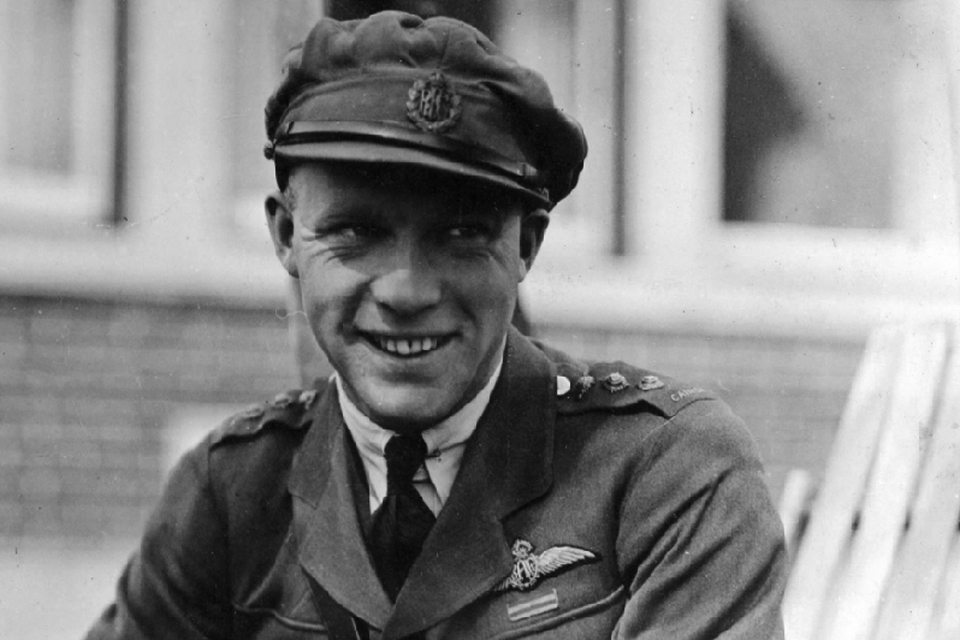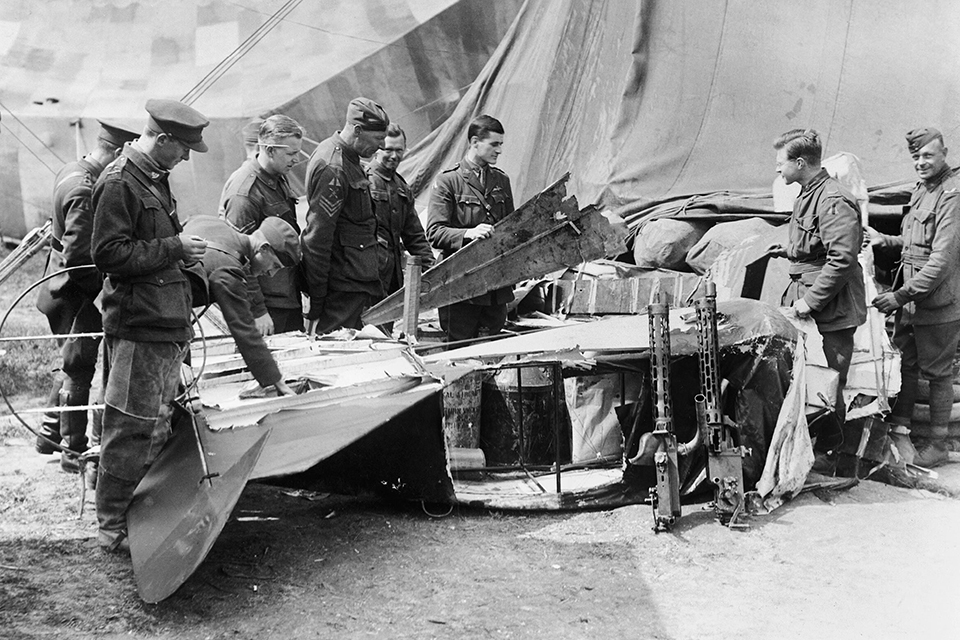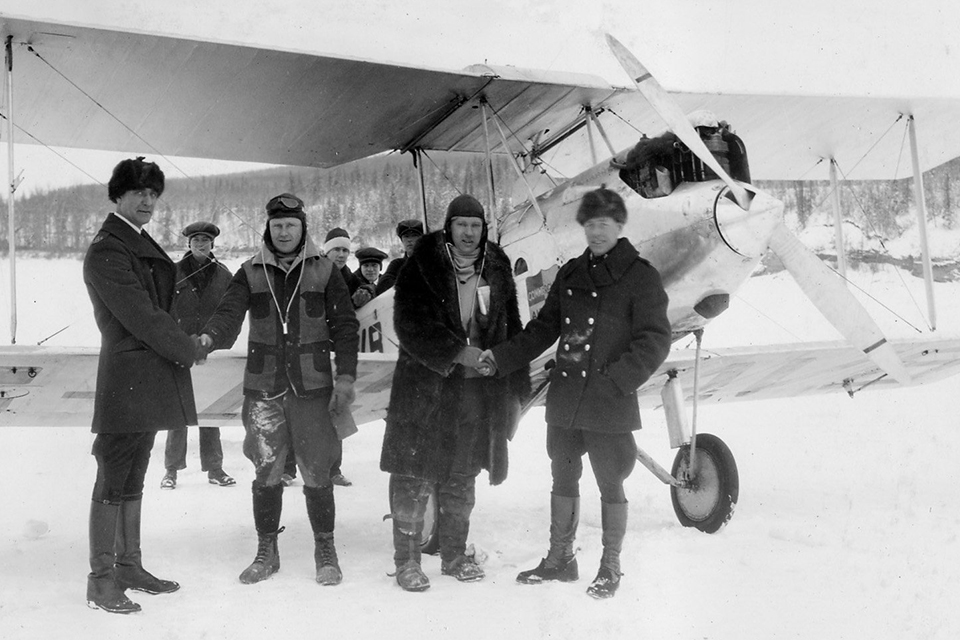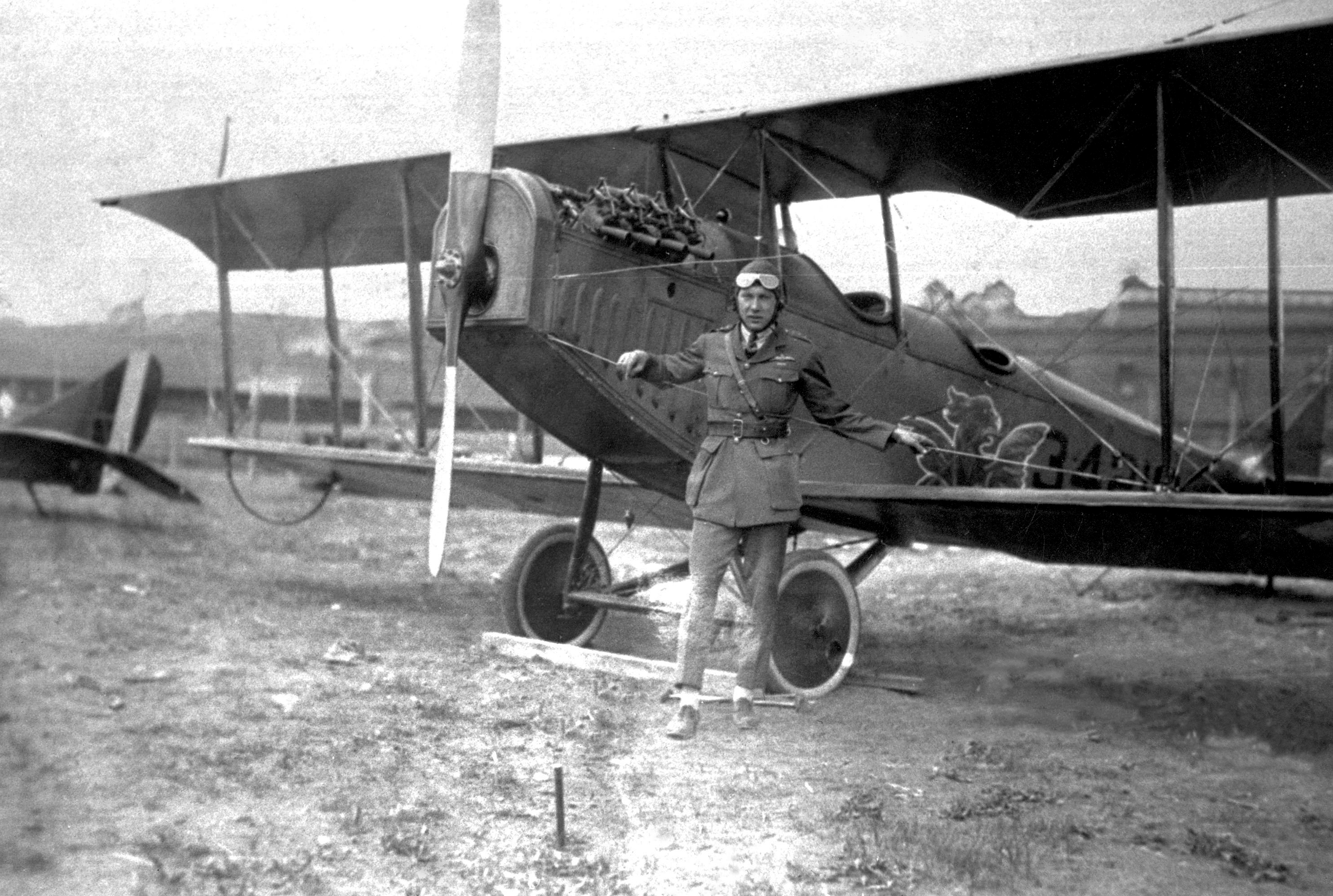On June 21, 1952, Wilfrid Reid “Wop” May, a giant in Canadian aviation, died of a stroke while hiking with his son to Timpanogos Cave, near American Fork, Utah. May’s flying career had opened with a scrap against the “Red Baron” and culminated in his receipt of the Medal of Freedom with Bronze Palm in February 1947 from U.S. Army Air Forces Brig. Gen. Dale Gaffney. His time in the air was marked by a series of Canadian aviation firsts and flights of incredible daring and difficulty.
Wop, a nickname he acquired in childhood when an infant cousin was unable to say Wilfrid, was raised in the Alberta city of Edmonton, where he enlisted in the Canadian army in February 1916. Rapidly promoted to sergeant, he applied to the Royal Flying Corps upon his arrival in Britain a year later. On April 9, 1918, Lieutenant May was transferred to No. 209 Squadron of the newly created Royal Air Force. He had turned 20 only days earlier.

During a patrol in a Sopwith Camel on April 21, May was ordered to stay above—and out of—any dogfights. Encountering a lone German novice who had been ordered to do the same, May nevertheless attacked. He had jumped Wolfram von Richthofen, cousin of Manfred von Richthofen, the Red Baron. The Baron, piloting his trademark red Fokker Dr.I triplane and seeing his younger cousin in trouble, took on May. Later May suggested his inexperience saved his life: “Richthofen was firing at me continually, [and] the only thing that saved me was my poor flying. I didn’t know what I was doing myself and I do not suppose that Richthofen could figure out what I was going to do.”
A .303-inch bullet put an end to the chase. Penetrating the Baron’s right armpit and resurfacing next to his left nipple, it was later found in his clothes. He managed a rough landing behind Allied lines, dying shortly thereafter.
Controversy surrounds the source of that bullet. The RAF attributed the kill to May’s squadron leader, Canadian Roy Brown. However, multiple Australian and British ground troops also claimed to have fired the fatal round. Regardless, it is certain that May was Richthofen’s quarry when he was killed. The Canadian would go on to claim 13 victories, becoming an ace and earning the Distinguished Flying Cross for “proving himself on all occasions a bold and daring pilot.”

Back on civvie street, Wop and his brother rented a Curtiss JN-4 “Jenny” and started May Airplanes Ltd., operating out of Canada’s first civilian airfield on the northwestern outskirts of Edmonton. In September 1919 May made history when he flew Edmonton Police Detective James Campbell 125 miles west to intercept John Larsen, a double murderer fleeing on a fast rattler. May delivered Campbell to Edson, where the detective caught a train to Mountain Park. He captured Larsen at the nearby Cadomin mine and returned the surprised fugitive to Edmonton for trial.
May’s most famous flight resulted from a medical emergency. On December 18, 1928, Dr. Harold A. Hamman composed a curt telegram in Little Red River, Alberta. After a 12-day, 280-mile trip south by horse and sleigh to the nearest telegraph station in Peace River, it landed on the Alberta deputy minister of health’s desk on New Year’s Day. It read: “DIPHTHERIA. FEAR EPIDEMIC. SEND ANTI-TOXIN.” Accompanied by Vic Horner in an Avro Avian, May took off on the 450-mile flight north that would take them almost to Alberta’s northern border on January 2. Through headwinds and a fierce storm, braving -30˚F temperatures, they successfully delivered the serum the next afternoon. The pair returned to Edmonton on January 6 to a crush of spectators and a raucous reception.

In 1932 May played an integral role in the hunt for the “Mad Trapper of Rat River.” On the last day of 1931, Albert Johnson shot and wounded Royal Canadian Mounted Police Constable Alfred King when the Mountie tried to execute a search warrant by forcing entry into the trapper’s cabin. Johnson subsequently survived an attempt to dynamite him out of his cabin, fleeing west through the frozen wilderness. He killed pursuing Constable Edgar “Spike” Millen on January 30 and eventually crossed the Richardson Mountains into the Yukon Territory, shaking the posse.
Desperate, the Mounties turned to May, now flying for Canadian Airways. Piloting a ski-equipped Bellanca CH-300 on Valentine’s Day, he caught sight of Johnson’s trail. Three days later, on February 17, the posse caught up to Johnson and killed him. During the gun battle Johnson critically wounded one of his pursuers. May, in his own words, “nosed the Bellanca down till our skis were tickling the snow” and flew the wounded constable to a hospital, saving his life.
Despite losing the use of an eye in 1935, and consequently his pilot’s license, May’s finest hours were yet to come. During World War II he served in Edmonton as commander of No. 2 Air Observer School. Edmonton was a key stop on the Northwest Staging Route that ferried Lend-Lease aircraft from the continental United States to Alaska and then on to Siberia and the Soviet air force. Hundreds of North American B-25 Mitchells, Douglas A-20 Havocs, Bell P-39 Airacobras and P-63 Kingcobras made the trip, and some crashed in the northern wastes. The citation for his Medal of Freedom commended May, who “voluntarily loaned the personnel and the facilities of his school to assure the delivery of aircraft to the Aleutians and Alaska without delay. He conceived the idea of aerial rescue crews for rescue of fliers in the bush area, and after developing a trained parachute squad he furnished a rescue service indiscriminately to Americans and Canadians, thus saving the lives of many of our fliers. In so do doing he fulfilled the highest traditions of the Dominion of Canada.”
This article originally appeared in the November 2020 issue of Aviation History. To subscribe, click here!
Ready to build your own replica of “Wop” May’s Sopwith Camel? Click here!





